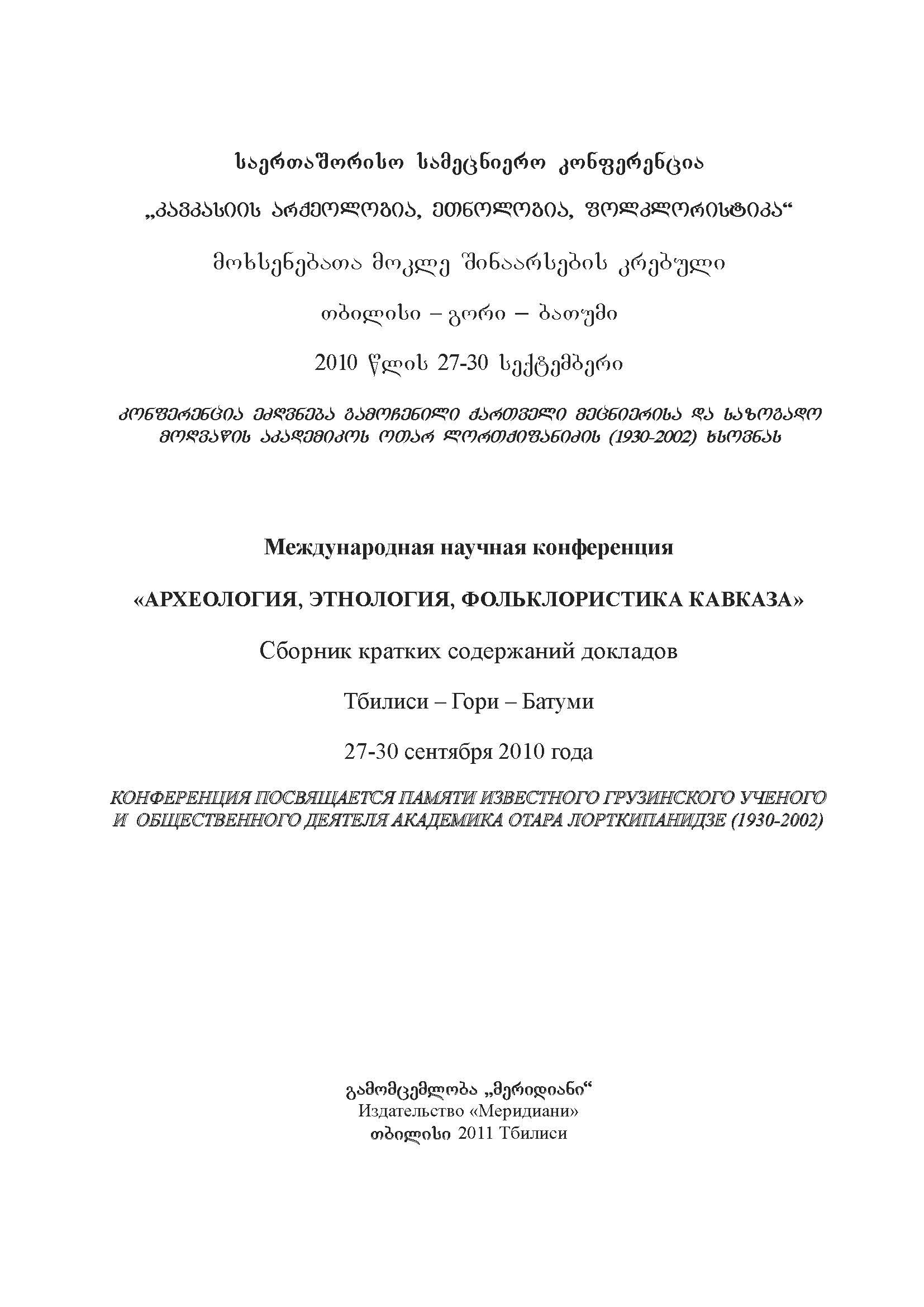Late Chalcolithic pottery of Armenia
Zardarian D. DownloadTo date, the most fully investigated Late Neolithic sites in Armenia are the Nerkin Godedzor settlement and Areni-1 cave, whose cultural strata contain numerous and highly informative remains of material culture, the chronological framework of which is confirmed by numerous radiocarbon dates. Ceramics occupy a central position among these remains, the study of which provides an opportunity to identify the pottery traditions of this time.
Both monuments are located in the southern part of the republic in the canyons of the Vorotan and Arpa rivers. The Nerkin Godedzor settlement is located in the Syunik region at an altitude of about 1800 metres above sea level. Several Eneolithic horizons with remains of stone walls and earthen floors (1:6-18) were discovered during excavations here. The Eneolithic horizons of this settlement, according to radiocarbon dates, are located in the time frame of 3600-3300 B.C.1.
The multi-gallery karst cave Areni-1, also known as ‘Ptichya’, is located to the east of the village of Areni and is situated at an altitude of about 1000 m above sea level in the rocky limestone formations of the left bank of the Arpa River (a tributary of the Arax). Excavations here revealed several Eneolithic horizons with a total thickness of three to four metres. The upper two (first and second) Eneolithic horizons have been studied most fully to date, with radiocarbon dates covering the time frame from 3600-3300 B.C. for the first horizon (2:2) and 4000/3900-3700 B.C. for the second.


